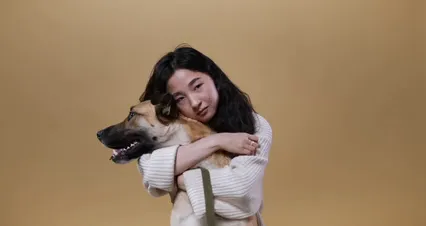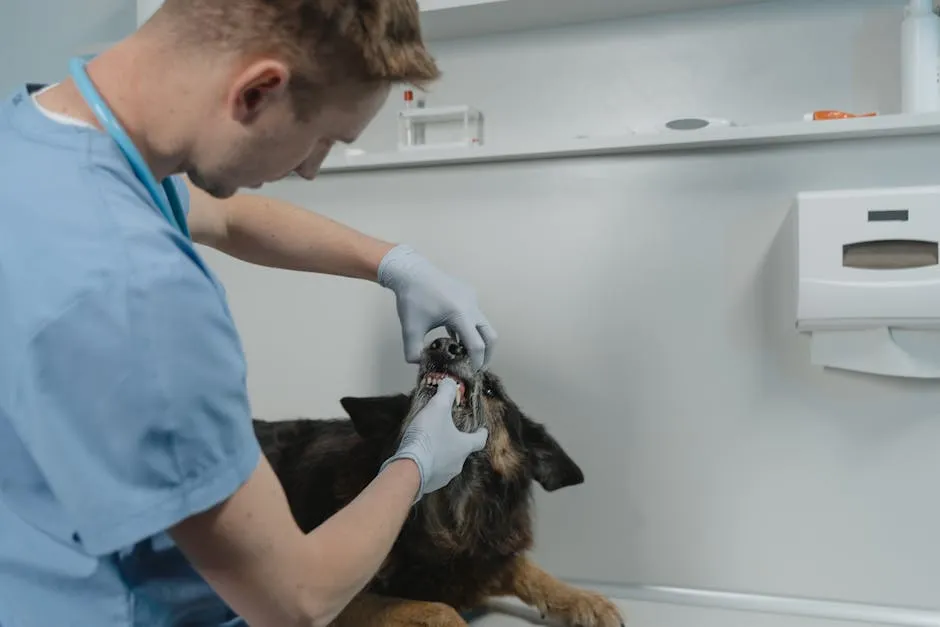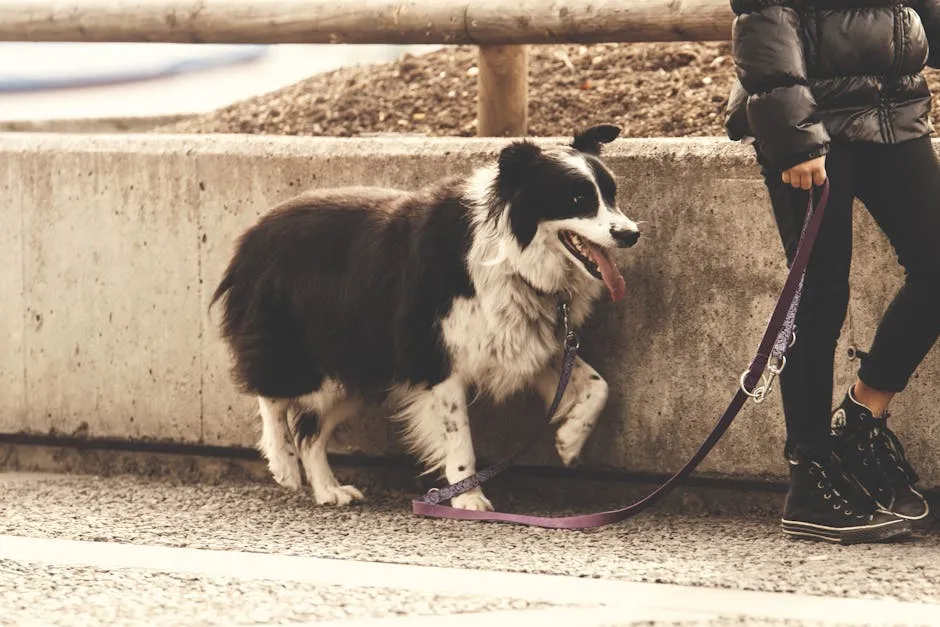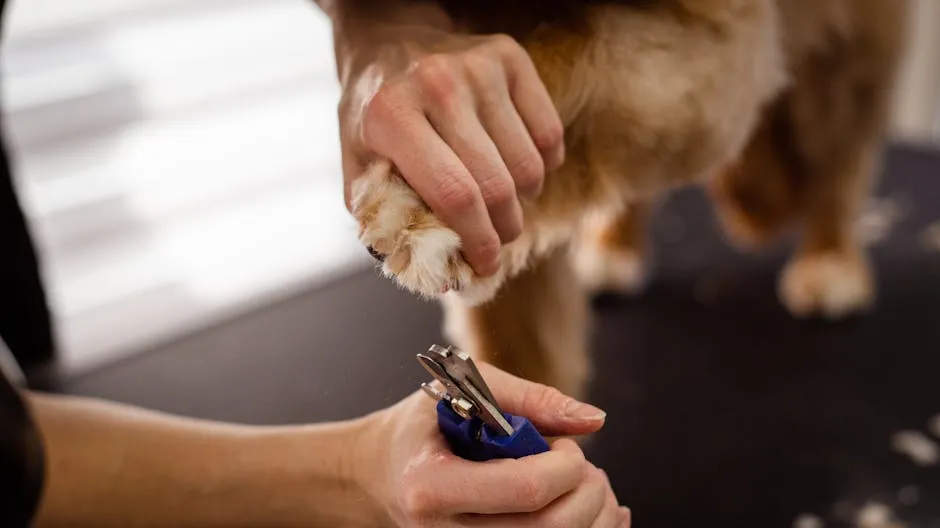Introduction
In a world filled with tiny teacup breeds and pocket-sized pups, the Mastiff stands out as a true giant among dogs. Known for their massive size and gentle demeanor, these “gentle giants” are not just a pretty face; they’re a unique blend of strength, loyalty, and affection. Imagine a dog that can take up half your couch but also offer the warmest cuddles. Sounds perfect, right?
But before you roll out the welcome mat for one of these impressive canines, it’s essential to understand what makes them tick, their needs, and, of course, their quirks. Mastiffs are known for their calm nature but can be surprisingly playful too. They love a good romp in the yard, chasing after a ball as if they were a much smaller breed.
Caring for a Mastiff isn’t just about providing food and water. It requires commitment, understanding, and the ability to handle drool—lots of it. You’ll want to invest time in training and socialization to ensure they grow into well-rounded companions. Speaking of training, consider using a Dog Training Clicker to reinforce positive behaviors. It’s a great tool to help your Mastiff learn commands effectively!
This guide will help you navigate through the fascinating world of Mastiffs, covering everything from training tips to health considerations. So, grab a comfy seat and prepare to embark on a journey filled with love, loyalty, and a few slobbery kisses. With the right knowledge, you can determine if this lovable giant is the right fit for your family. Get ready to meet your new best friend!

Mastiff Breed Information
Overview of the Breed
Mastiffs have a storied history as working dogs. Their roots trace back to ancient civilizations, where they were used for guarding, hunting, and even war. These gentle giants belong to the ‘Working’ group, which showcases their ability to protect and serve. According to the Kennel Club, Mastiffs fall under ‘Category Three,’ indicating that they may have visible conditions impacting their health and comfort.
These dogs are known for their calm demeanor and good nature, making them well-suited for family life. They require early socialization to develop into confident and sociable companions. The Mastiff’s classification emphasizes their unique physical characteristics, which, while impressive, can also lead to health complications. To support their health, consider a high-quality diet like Blue Buffalo Life Protection Formula Large Breed Dog Food. It’s specially formulated to meet the nutritional needs of large breeds like Mastiffs!

Key Traits
Mastiffs are large, robust dogs, often weighing between 80 to 150 pounds. Their height ranges from 24 to 30 inches, making them one of the largest dog breeds. With a short coat, grooming is minimal; a weekly brushing will suffice, but don’t forget those facial wrinkles! Those delightful folds require daily attention to avoid irritation.
In terms of temperament, Mastiffs are gentle and loyal. They’re protective of their families but have a loving side that shines through. Their affectionate nature makes them great companions, especially for families. Overall, Mastiffs embody a blend of strength and kindness, ensuring that their owners feel secure and cherished. To keep your Mastiff entertained, consider getting them a fun toy like the ZippyPaws – Burrow Squeaky Hide and Seek Dog Toy. It’s a great way to keep their minds sharp!
With the right care and training, these magnificent dogs can thrive in any home environment. So, if you’re prepared to shower them with love and attention, a Mastiff may just be the perfect addition to your family!

Health Considerations
Mastiffs are magnificent dogs, but they come with health considerations. Understanding these issues can help ensure your giant buddy lives a long, happy life. One common concern is entropion, a condition where the eyelids roll inward. This can cause irritation and discomfort. Regular eye examinations can help catch this early.
Another serious issue is gastric torsion, also known as bloat. This happens when the stomach twists, often after eating. Symptoms include bloating and unproductive vomiting. If your Mastiff shows these signs, don’t hesitate—get them to the vet immediately!
Mastiffs can also face joint disorders like hip and elbow dysplasia. These conditions can lead to arthritis and discomfort over time. Regular check-ups can help manage these potential issues. A great way to support joint health is by incorporating Zesty Paws Omega 3 Salmon Fish Oil into their diet. It can help maintain healthy joints!
Responsible breeding practices are vital. Ensure your pup comes from a reputable breeder who screens for genetic conditions. This can significantly reduce health problems later on. Regular veterinary care is equally important. Annual check-ups, vaccinations, and preventative measures can keep your Mastiff in tip-top shape. Remember, a healthy Mastiff is a happy Mastiff!

Training and Socialization
Importance of Early Training
Training a Mastiff is like trying to teach a boulder to roll downhill—challenging, yet rewarding! Early socialization is crucial for these gentle giants. It helps them become well-adjusted adults. Exposing them to various people, pets, and environments can ease anxiety and promote confidence.
Positive reinforcement is the way to go! Treats, praise, and playtime can work wonders. Mastiffs respond better when they feel rewarded for their efforts. Start with basic commands like sit and stay. This sets a solid foundation for more advanced training later. To help with training, consider using a Dog Training Whistle. It’s a great tool for getting their attention!

Common Training Challenges
Mastiffs can be stubborn. They’re not just big; they have big personalities! You might encounter behavioral issues like jumping or barking. Address these early. Consistency is key. Use commands and redirect their energy toward positive behaviors.
Integrating them with other pets and children requires patience. Supervise interactions initially. Teach your Mastiff to be gentle. This will ease their transition into family life. Establishing rules early on will help them understand their place in the pack.
With time, effort, and lots of love, your Mastiff can become a well-mannered family member. Their loyalty and affection will make every training session worthwhile! A PetSafe Gentle Leader Head Collar can help with training by giving you better control during walks!

Exercise Requirements
Daily Exercise Needs
Mastiffs aren’t couch potatoes, despite their size. They need about an hour of exercise daily. This can include walks, playtime, or even light jogging. Just remember, they’re not built for marathon training. Keep it moderate to avoid joint strain.
For puppies, caution is key. Their bones are still developing, so limit high-impact activities. Short, gentle walks are ideal. Gradually increase their exercise as they grow. Always watch for signs of fatigue—no one likes a tired giant!

Fun Activities for Mastiffs
Besides regular exercise, engage your Mastiff with fun activities. Games like fetch or tug-of-war can stimulate their minds and bodies. Training exercises disguised as play can also build strong bonds. Mastiffs love to please, so make training enjoyable! An Dog Water Bottle with Bowl is perfect for keeping them hydrated during playtime!
Incorporating these routines will keep your Mastiff healthy and happy. A well-exercised Mastiff is a content Mastiff!

Grooming and Care
Grooming Basics
Grooming your Mastiff is generally straightforward. Their short coat requires minimal maintenance. A good brushing once a week can keep their coat looking sleek. However, don’t forget about those adorable facial wrinkles! They need daily cleaning to prevent irritation. Use a soft cloth to gently wipe away any dirt or moisture. Keeping these areas clean is essential for their health.
Bathing can be done every few months or as needed. Mastiffs are not known for their “fragrance of the wild,” so a bath might be necessary after a mud adventure. Use a gentle dog shampoo to avoid skin irritation. Always ensure you rinse thoroughly to prevent any residue.
Regular nail trimming is also important. Long nails can be uncomfortable and lead to joint issues over time. Aim to trim their nails every few weeks or as needed. If you’re unsure, a groomer can help. Consider using Dog Grooming Gloves to help with shedding and keeping their coat in top shape!

Diet and Nutrition
Mastiffs are large dogs, and their diet reflects that. They require a high-quality, balanced diet to support their size. Look for dog food specifically formulated for large breeds. This helps maintain a healthy weight and supports joint health. For an excellent option, check out the PetFusion Ultimate Dog Bed. It’s perfect for providing comfort and support for their joints!
Feeding schedules should be consistent. Most Mastiffs thrive on two meals a day. This helps prevent bloat, a serious condition that can affect them. Measure their food to avoid overfeeding—those puppy-dog eyes can be deceiving!
Consider adding some variety to their diet. Incorporate high-quality treats for training or just because! Fresh vegetables like carrots can be a healthy snack. Always check with your vet before introducing new foods.
Hydration is crucial! Ensure your Mastiff has access to fresh water at all times. Keeping them hydrated supports their overall health and well-being. By following these guidelines, you’ll keep your gentle giant healthy and happy!

Estimated Lifetime Costs
Breakdown of Expenses
Owning a Mastiff is a commitment, and it comes with costs. Here’s a breakdown to consider:
Initial Costs: Expect to pay a significant purchase price depending on the breeder. Vaccinations and microchipping are essential too. Factor these into your budget when bringing your new friend home.
Ongoing Costs: Once settled in, you’ll have ongoing expenses. Quality food for a large breed like a Mastiff can be considerable. Depending on the brand, costs can range from $100 to $200 monthly. To save some cash, consider using a PetSafe Healthy Pet Simply Feed Automatic Dog Feeder. It can help manage portion control!
Insurance: Pet insurance is advisable. It can help cover unexpected vet bills. Monthly premiums vary but budgeting around $50 to $100 is a good start.
Grooming and Vet Visits: Regular vet check-ups are necessary for their health. Budget for grooming, which can be minimal, but occasional baths and nail trims add up. Expect to spend around $200 annually for routine care.
Miscellaneous Costs: Don’t forget accessories like toys, bedding, and training gear. These can add to your budget too. A rough estimate for these combined expenses could be around $500 annually.

Unexpected Costs
It’s wise to prepare for unexpected health issues. Mastiffs can face several breed-specific conditions. Emergency vet visits can be costly. Setting aside a savings fund can help cover these potential expenses. Investing in your Mastiff’s health will ensure they live a long, happy life.
By understanding the costs associated with Mastiff ownership, you can be better prepared. This gentle giant will bring incredible joy and love, making every dollar spent worthwhile!

Conclusion
In conclusion, Mastiffs are not just dogs; they are a lifestyle choice that requires dedication, love, and understanding. Their imposing size is matched only by their warm hearts, making them ideal companions for those ready to embrace the challenges and joys of owning a giant breed. With proper training, socialization, and care, a Mastiff can become a cherished member of your family, offering loyalty and affection for years to come.
These magnificent dogs are known for their calm demeanor and gentle nature. They are protective yet incredibly affectionate, making them perfect for families. However, potential owners must be aware of their specific needs and health considerations. From regular vet check-ups to a balanced diet, caring for a Mastiff requires commitment.
Training is crucial. Early socialization helps them grow into well-adjusted adults. Positive reinforcement methods work wonders, as Mastiffs respond best when they feel rewarded. With patience and consistency, you’ll find that your giant buddy can learn and thrive in your home. For added training support, consider using PetSafe Training Treats. They’re perfect for rewarding good behavior!
Of course, owning a Mastiff comes with its share of financial commitments. From food to routine veterinary visits, costs can add up. Unexpected health issues may arise, so having a financial plan in place is wise. Pet insurance can be a valuable asset, providing peace of mind for those surprise vet bills.
If you’re contemplating inviting one of these gentle giants into your home, prepare for a rewarding journey filled with love, loyalty, and a few slobbery kisses. The bond you’ll form with your Mastiff will be unlike any other. They will fill your heart with joy and your home with warmth. So, grab your leash and get ready for countless adventures with your new best friend!
Training and socialization are vital for Mastiffs, and using effective positive reinforcement techniques for stubborn dogs can make a significant difference in their behavior.
Please let us know what you think about our content by leaving a comment down below!
Thank you for reading till here 🙂
All images from Pexels





